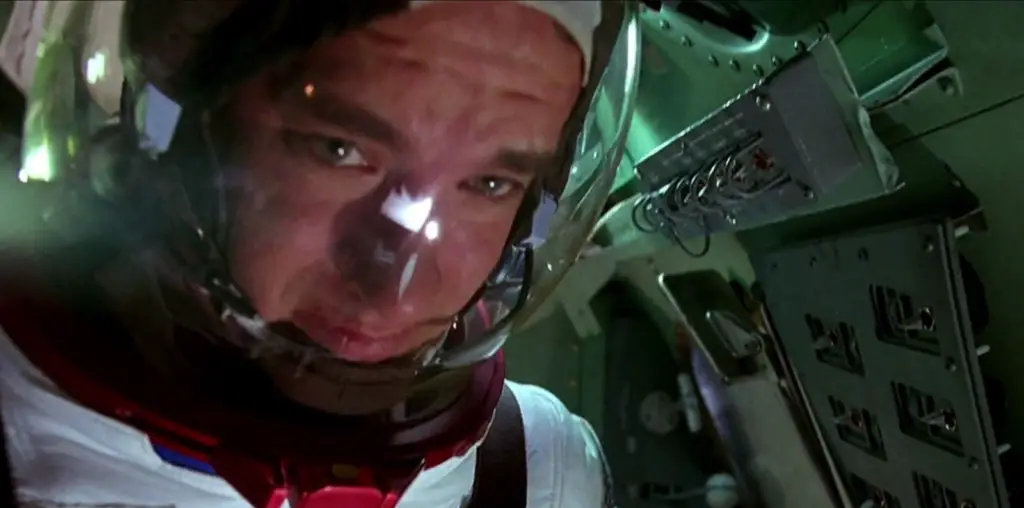
White carpeting covers a small entryway in front of a door. Within this bare, ordinary space, filmmaker Ed Rankus makes an extraordinary set of formal variations using light bulbs, paper, ceramic bowls, white sheets, and footage from a Baroque opera. Some examples: a man sits on the carpet among 3 red bulbs, attached to cords. He repeatedly turns the light on and off. Two enormous red bulbs, in front of a sheet, contain the faces of opera singers. We see a white ceramic bowl and a black bowl on a wooden shelf, and this image is intercut with a red bulb and a blue bulb on the same shelf. The man walks on the crumpled sheet, carrying the red bulb, and the dim red light illuminates the texture of the sheet. We see the man’s feet walking towards us, between two rows of blue bulbs (which provide the only light), and his feet approach a piece of paper which frames a shot from the opera.
Near the start of the film, the man looks in a book of “Techniques of the World’s Great Painters,” and this book is later used as a frame for many of the images, announcing the film’s concern with composition and visual form. Repeated quotes from a Garbo silent film introduce the theme of highly charged emotional drama, rendered as a kind of abstract, formal element. A sparse, modernist percussion score is an important element, as many of the visual changes are carefully timed to musical sounds.
With these simple components, Rankus creates a thrilling visual and musical experience. Rankus’ visual compositions are always striking. His sense of timing and musicality is precise and creates constant drama and tension. The balance he creates between re-using old elements in new ways, and occasionally introducing new themes and content (such as a William Blake poem, which first appears half-way through the piece) creates a constantly stimulating and satisfying experience for the viewer.
Although every shot in this video is beautifully lit and beautifully framed, the simplicity of the images implies that Rankus is not primarily interested in creating a sense of ravishing, complex beauty within individual moments. Rather, the power of this piece is in the sequencing: the sense of constant illumination and refinement that comes as each shot comments on the previous shots, twisting them and taking them one step further in the exploration of the themes. Using a limited set of heterogeneous elements, some highly dramatic and emotionally charged, some from familiar everyday objects, and some abstract and formal, and using these elements playfully as themes which are repeated and varied in satisfying and dynamic sequences, Rankus reveals his mastery of video as a medium which manipulates both inner and outer reality. “In the Sun Room” uses simple light bulbs to create a series of continual aesthetic illuminations.
